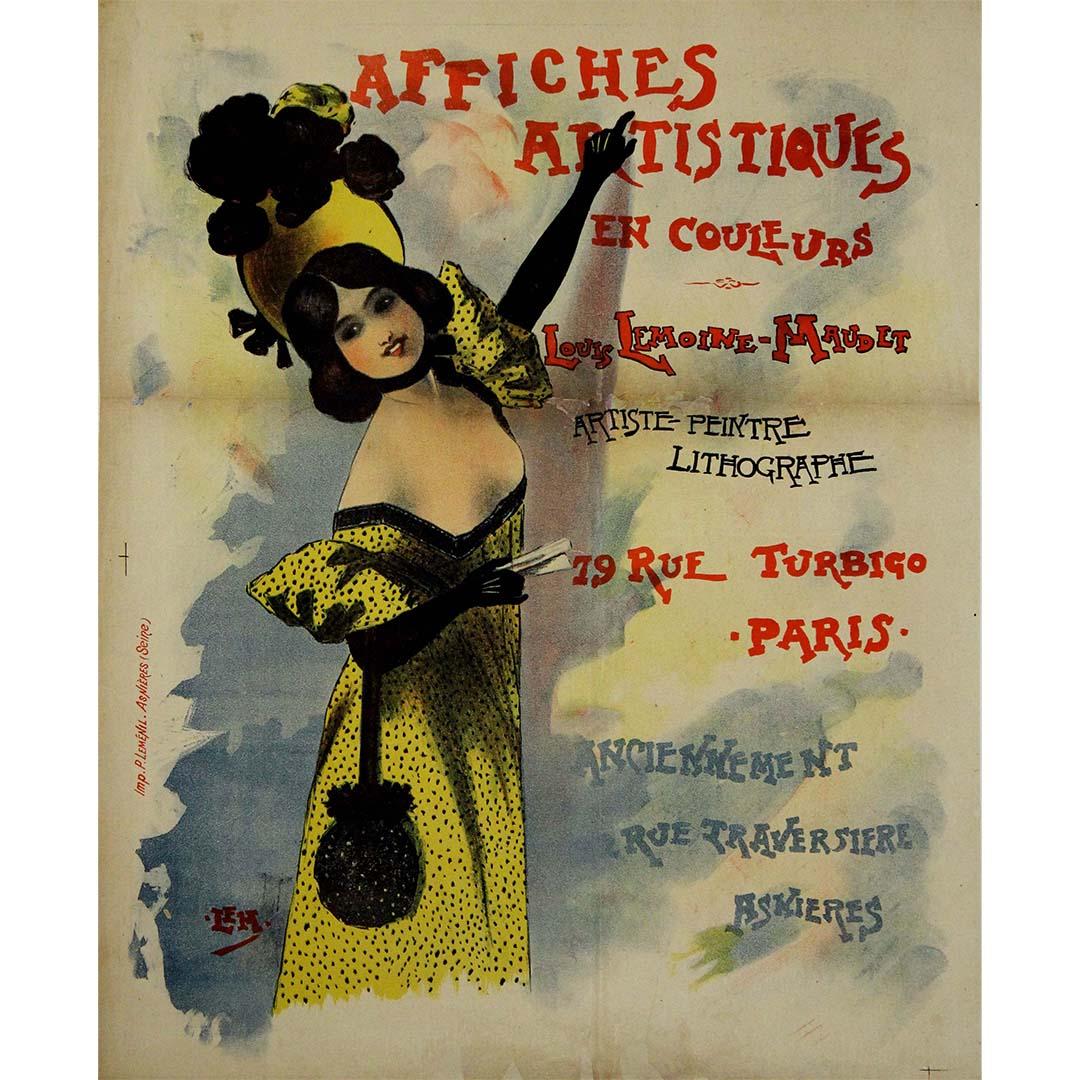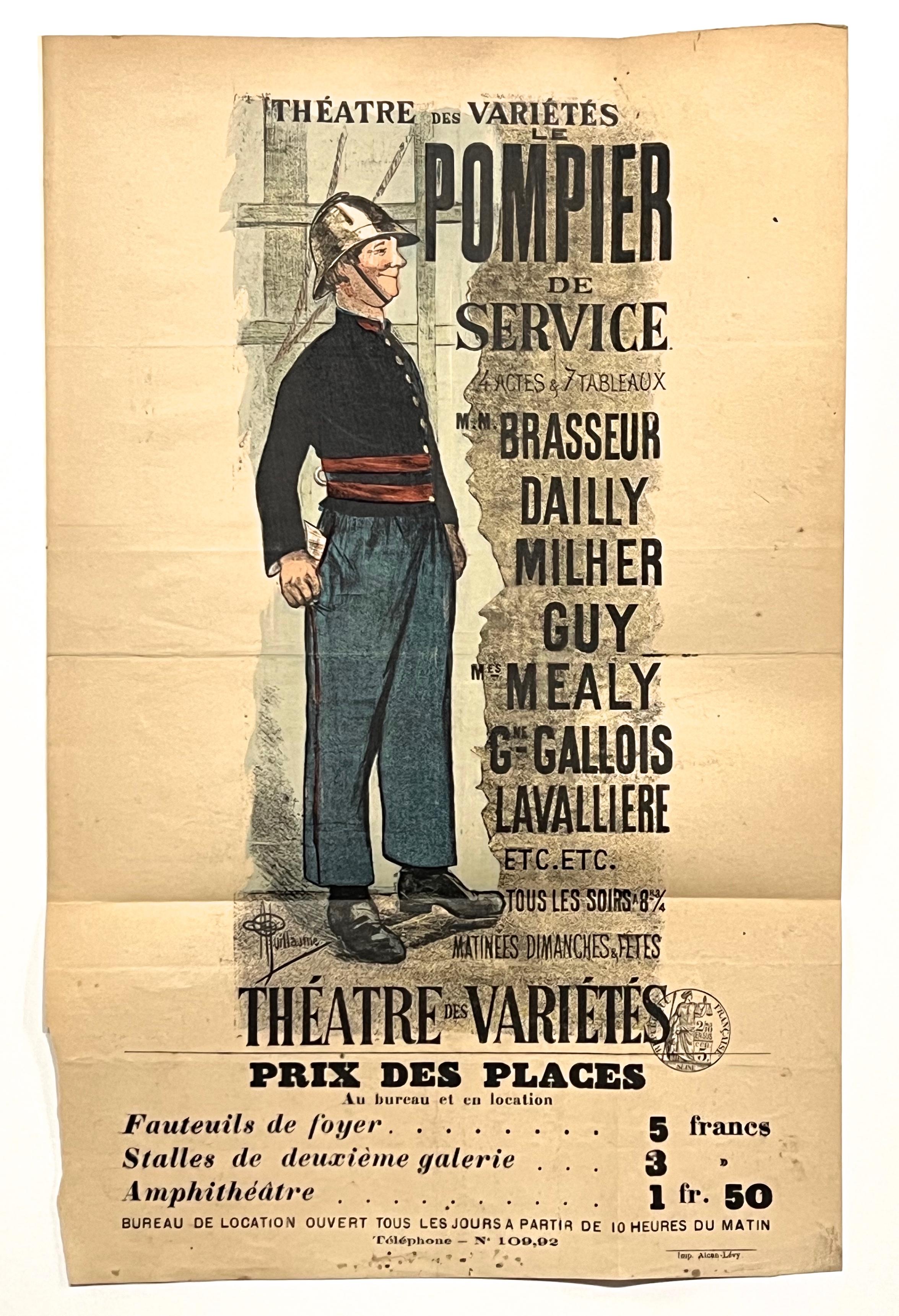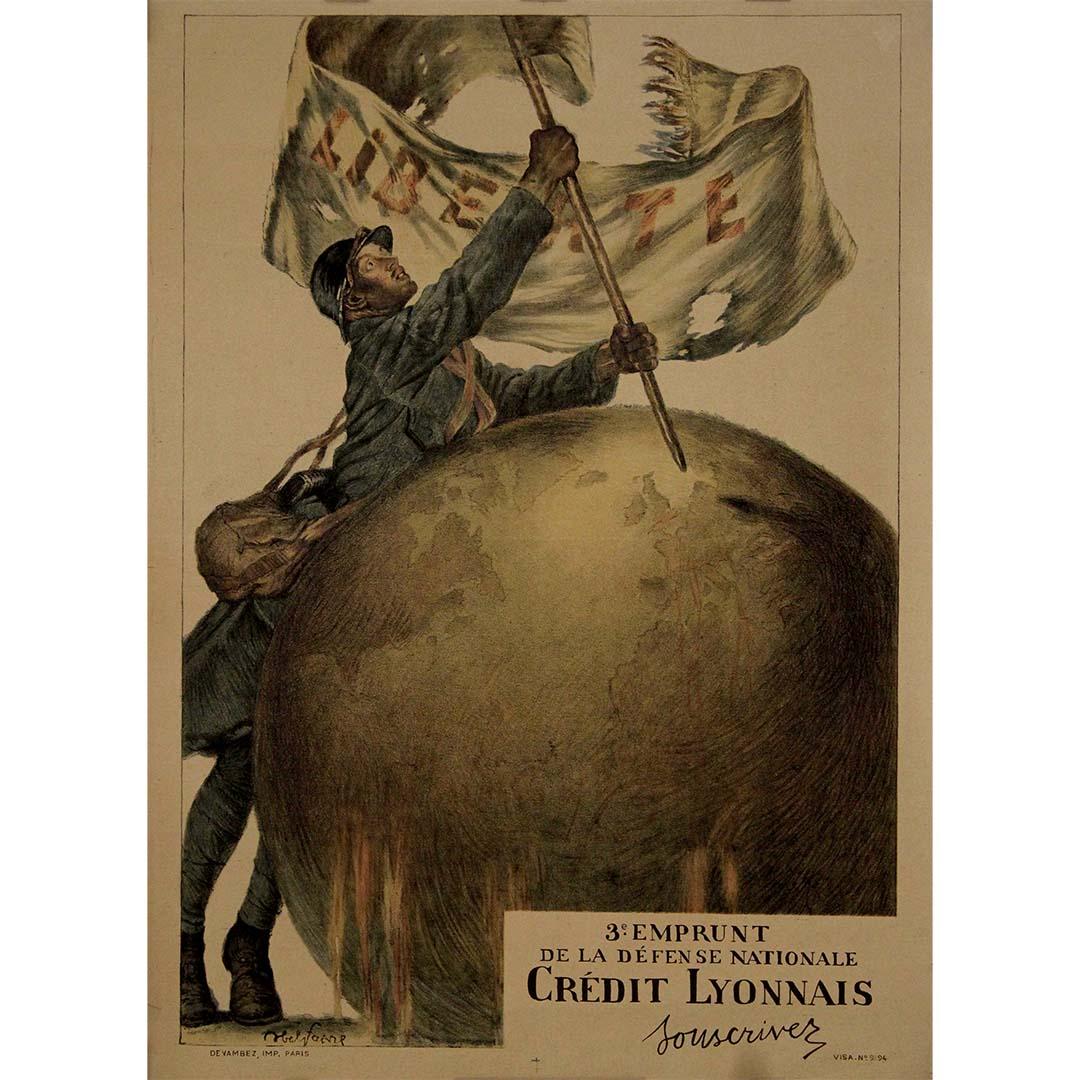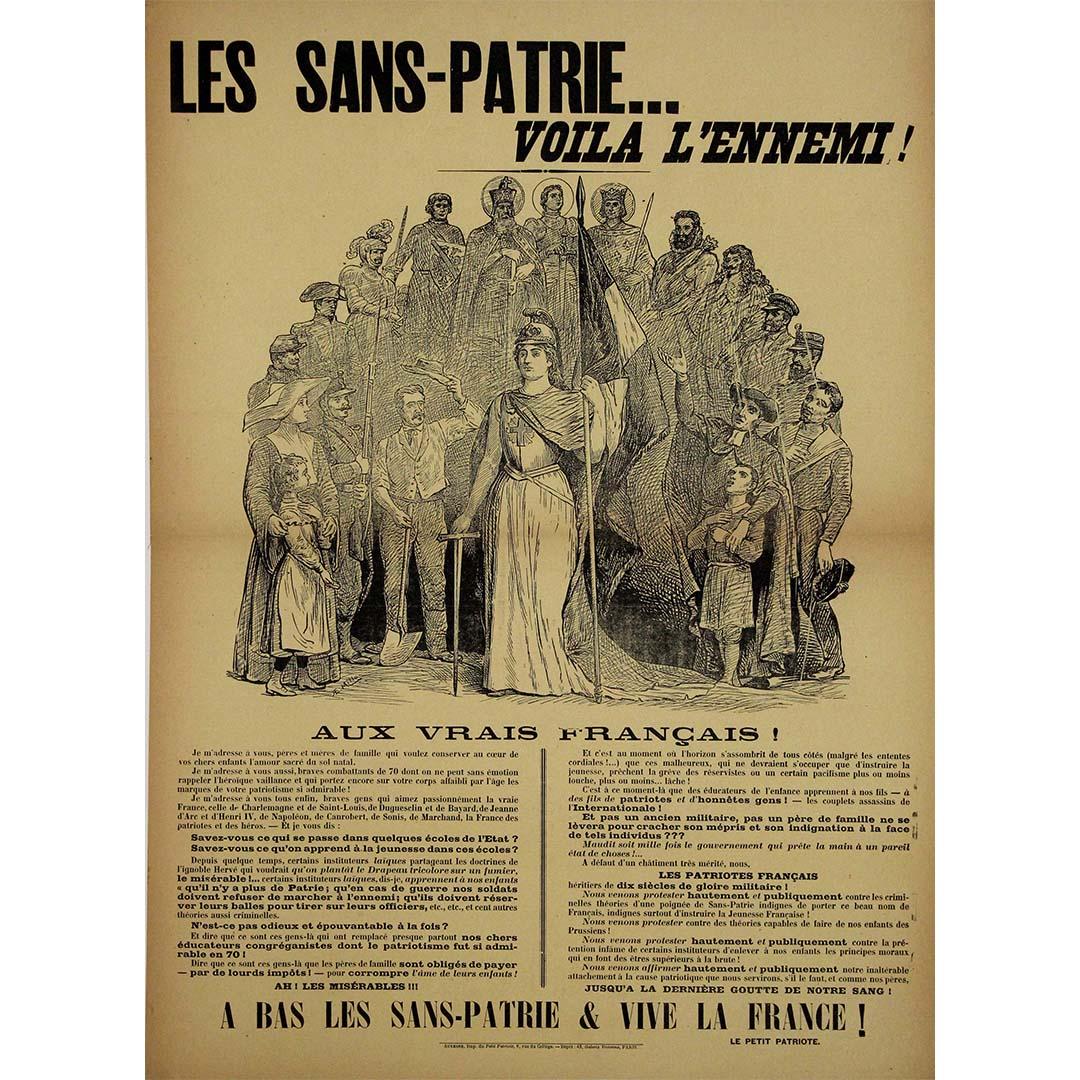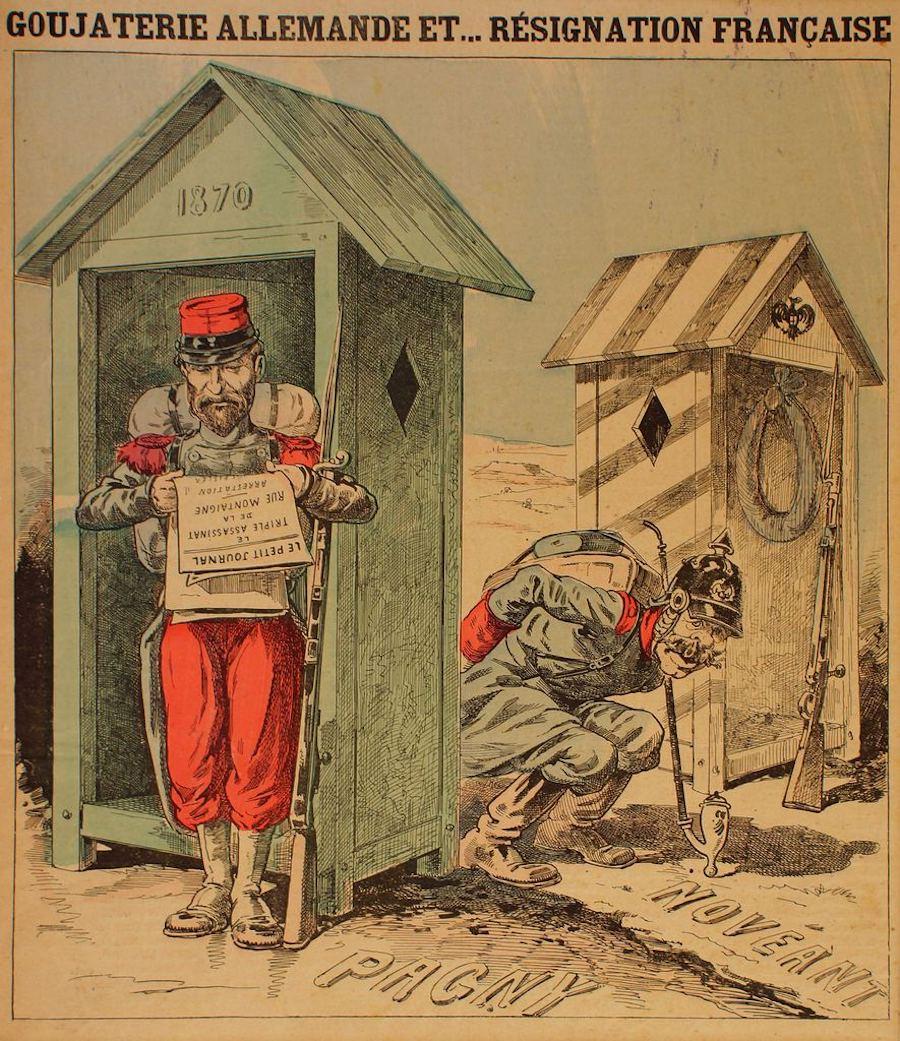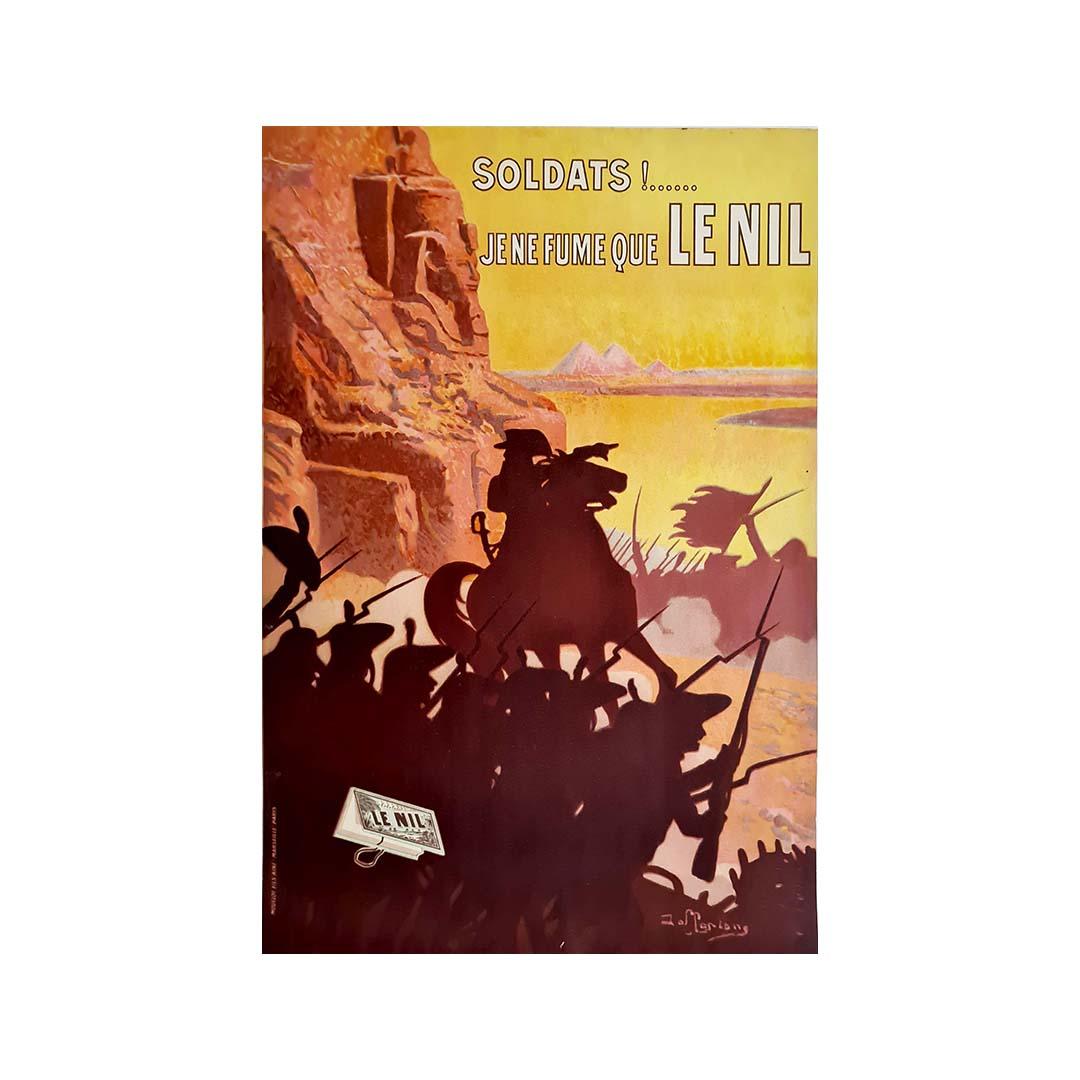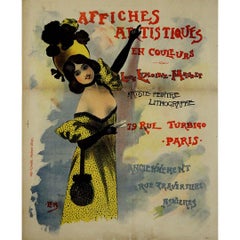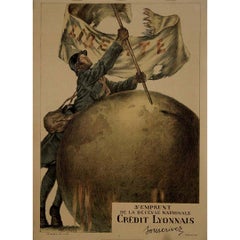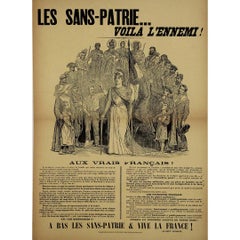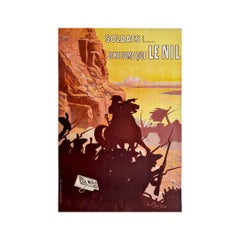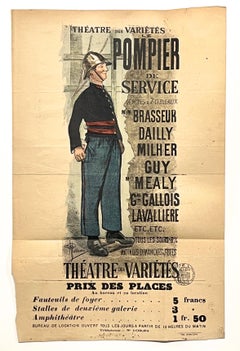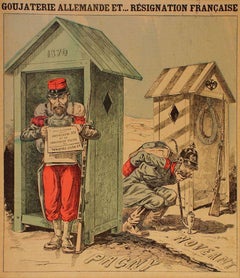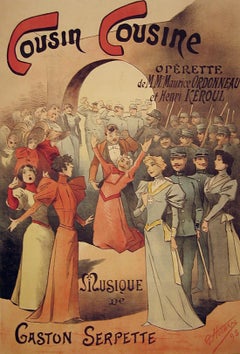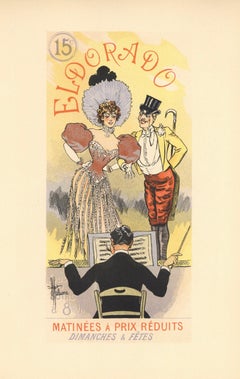Albert GuillaumeOriginal poster by Albert Guillaume - Soldat Prends chaque jour ta QuinineCirca 1915
Circa 1915
About the Item
- Creator:Albert Guillaume (1873 - 1942, French)
- Creation Year:Circa 1915
- Dimensions:Height: 22.84 in (58 cm)Width: 31.11 in (79 cm)
- Medium:
- Period:
- Condition:Good condition, on linen.
- Gallery Location:PARIS, FR
- Reference Number:1stDibs: LU1792215521552
Albert Guillaume
Albert Guillaume, born in Paris, France on February 14th, 1873, was a French painter and caricaturist who became a leading caricaturist during the Belle Époque. He created theater posters as well as advertising posters that were greatly influenced by the work of one of the preeminent poster painters, Jules Chéret. While remembered for his poster art, Guillaume was also widely recognized for his oil paintings of upper-crust Parisian society. His paintings reflect the customs, habits and societal activities of his day, and are complex compositions featuring Parisian society at leisure. Guillaume is also known for his satirical drawings that appeared in Parisian humor magazines such as Gil Blas, Le Rire, L’Assiette au Beurre, and Le Figaro. The winner of a bronze medal at the Universal Exhibition of 1900 in Paris, Guillaume had many of his illustrations published in albums by such firms as Ernest Maindron and Librairie illustrée, J. Tallandier, including three albums of military cartoons with the preface for the 1896 edition written by Georges Courteline. Albert Guillaume died on August 10th, 1942 in the rural village of Faux in the Dordogne department of Fran
- ShippingRetrieving quote...Shipping from: PARIS, France
- Return Policy
More From This Seller
View AllEarly 1900s Prints and Multiples
Linen, Paper, Lithograph
1910s Prints and Multiples
Paper, Lithograph
Early 1900s Prints and Multiples
Paper, Lithograph, Linen
Early 1900s Prints and Multiples
Paper, Lithograph
1910s Prints and Multiples
Paper, Lithograph
1910s Prints and Multiples
Linen, Paper, Lithograph
You May Also Like
1890s Prints and Multiples
Lithograph
1880s Figurative Prints
Lithograph
Early 1900s Art Deco More Prints
Lithograph
1890s Prints and Multiples
Lithograph
1890s Prints and Multiples
Lithograph
1890s Prints and Multiples
Lithograph
